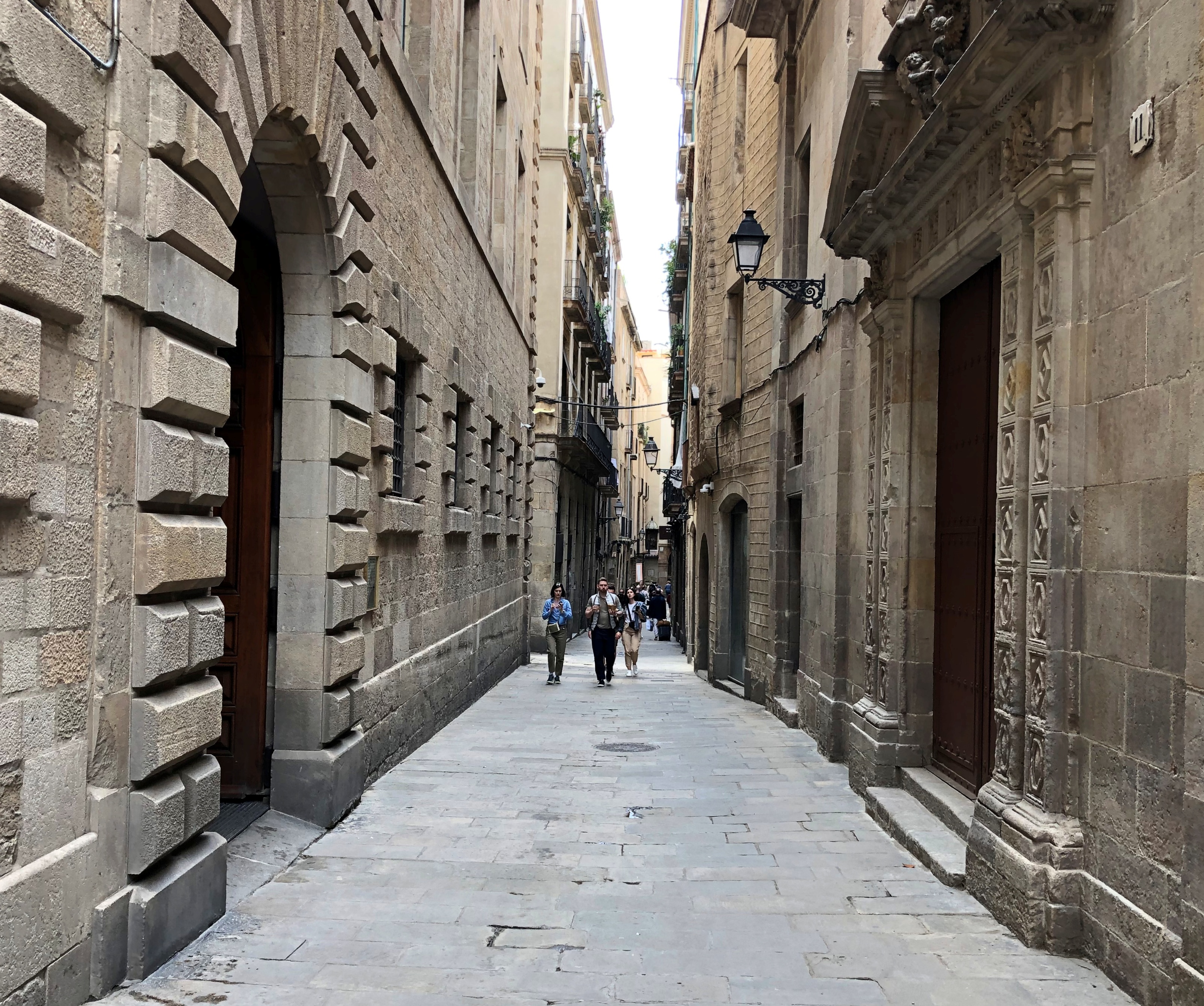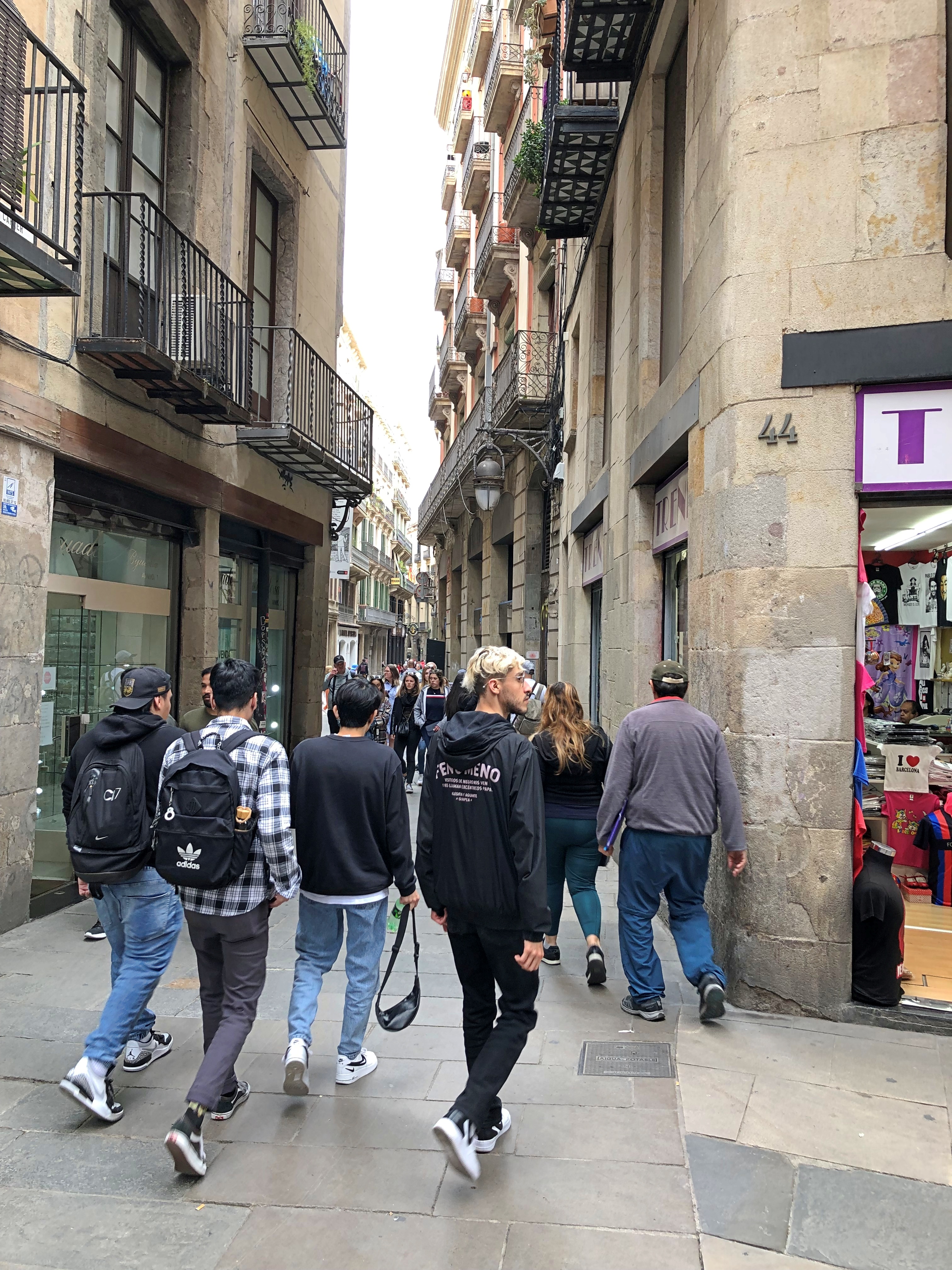The Fourteenth Edition of Encyclopædia Britannica (1929) includes the following information (p. 103) in its Barcelona entry, about what is now known as the Barri Gòtic, the Gothic Quarter, which EB refers to simply as Ciudad.
“The Ciudad is the old Barcelona, built around the Roman Barcino… In the interior of the Ciudad are the architectural treasures left to Barcelona – the Plaza del Rey; the Gothic cathedral…; the church of Santa Maria del Mar and many public buildings…
“The narrow, irregular streets of the old quarter were broken through in the 19th century by the Calle de Fernando VII and its continuations, and more recently by the Via Layetana and other avenues; it seems probable that the mediæval ground-plan, so long conserved, will soon be unrecognizable.”
I’m glad to report that urban renewal didn’t completely erase the old quarter over the last century.


Could be that the Depression and then the civil war put a halt to further big changes in the urban landscape, and by the 1950s, the quarter was run down and less desirable, and the city was expanding outward anyway. Then the neighborhood got spiffed up, though retaining its irregularities, in time for the 1992 Olympics.
Via Layetana is still called that, but Calle de Fernando VII is known as Carrer de Ferran in our time, since no doubt naming things for Spanish kings is a no-go in modern Catalonia.
These days, affluent Catalans roam the narrow streets of Ciudad, supporting an array of small shops, boutiques, restaurants, bars, and other businesses. The many tourists support those businesses, too, but also the likes of the Museu Picasso (as we did), Museu Moco, Museu Frederic Marès, Museu d’Historia de Barcelona, and the Museu de la Xocolata.
Most of the time, we walked around just to see what we could see. This kind of pre-car streetscape is pretty thin on the ground in North America (with a few exceptions), so it was a good ramble in the mediæval ground-plan.
Fun things in the shop windows.

A fair amount of graffiti, or rather street paintings.


I don’t think I’d ever seen a beggar in the pose that you see in illustrations. He didn’t move a bit. 


I gave him a euro for his trouble.